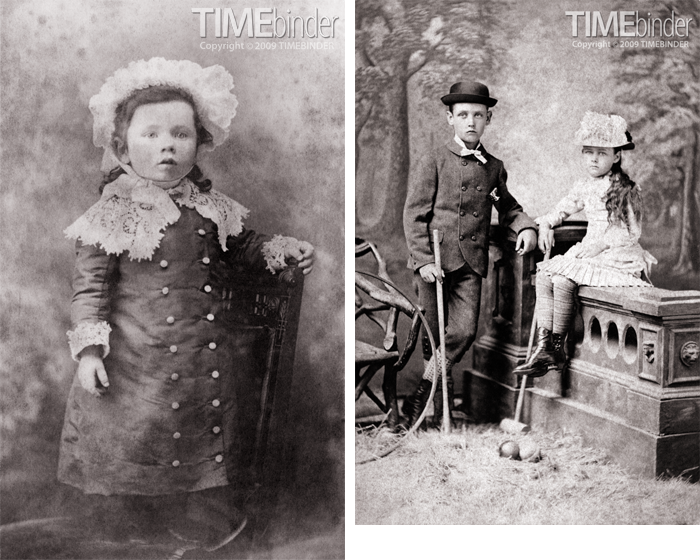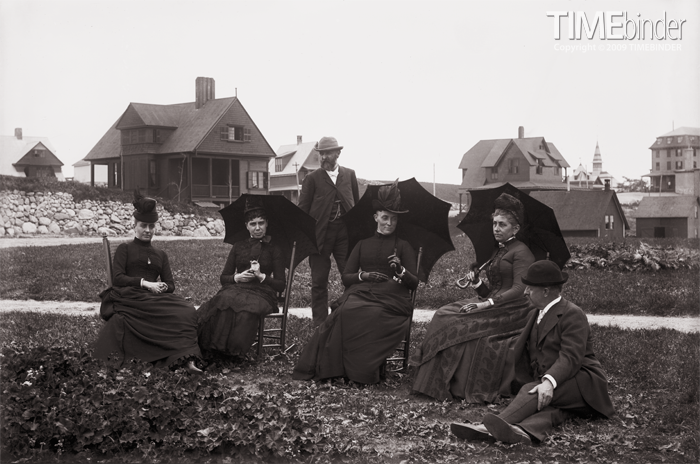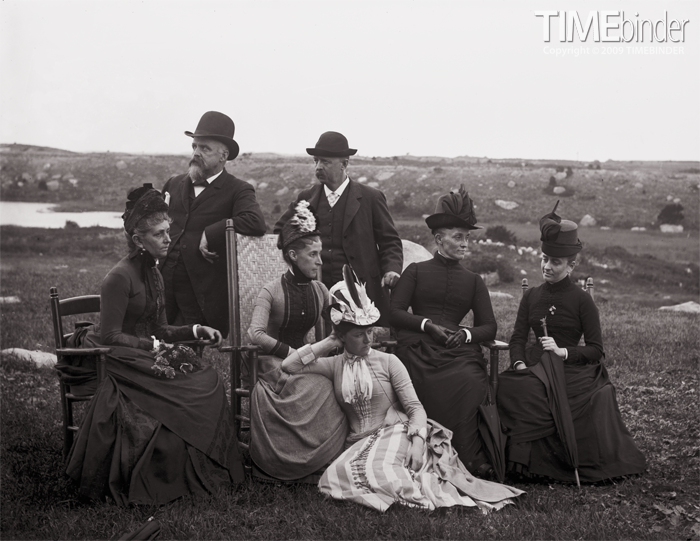Occupational Hazards
 Friday, June 19, 2009 at 12:02AM
Friday, June 19, 2009 at 12:02AM 
I am posting these two portraits of children side by side to demonstrate what the studio photographer faces when the subjects are children, and what the collector faces a century later in trying to accurately date the results of the work.
All photographers whose living depends on pleasing their clientele must have stories to tell and nightmares to contend with. Even if you truly like children, taking non-candid pictures of them in a captive environment has to rank up there with teaching – it takes a special sort of person with patience and creativity; everyone knows teachers who despise their jobs and I’m sure many photographers have wanted to go home and hang themselves after a long day. You have to know that a lot of photos never made it into albums (or collections) because they were awful, and the photographer didn’t get paid.
The child on the left has no idea what is being done but she is at least interested in the process (the photographer is fortunate); the pair on the right are all too aware because this may be a yearly routine that holds no great interest for them (the photographer struggles to engage them, pulls props from his collection, hopes the parents will not be too critical and pay for this print of their surly offspring – or maybe this was the look the family cultivated, so they may have been quite pleased).
There are very few good resource books for Victorian, Edwardian and early 20th century fashions, and practically nothing on children’s clothing from the periods that cover the first 100 years of photography. The collector can date photos of adults to within five or ten years, but the best one can hope for with children is an assumption that parents will dress them in some degree like themselves. Furniture styles give you dates before which a photo could not have been taken, but tells you nothing about how long after. My best guess is 1875 for the first (Chicago photographer), 1885 for the second.
Both of these images are small CDVs (Carte de Visites) of mediocre quality which accounts for the grainy texture.






